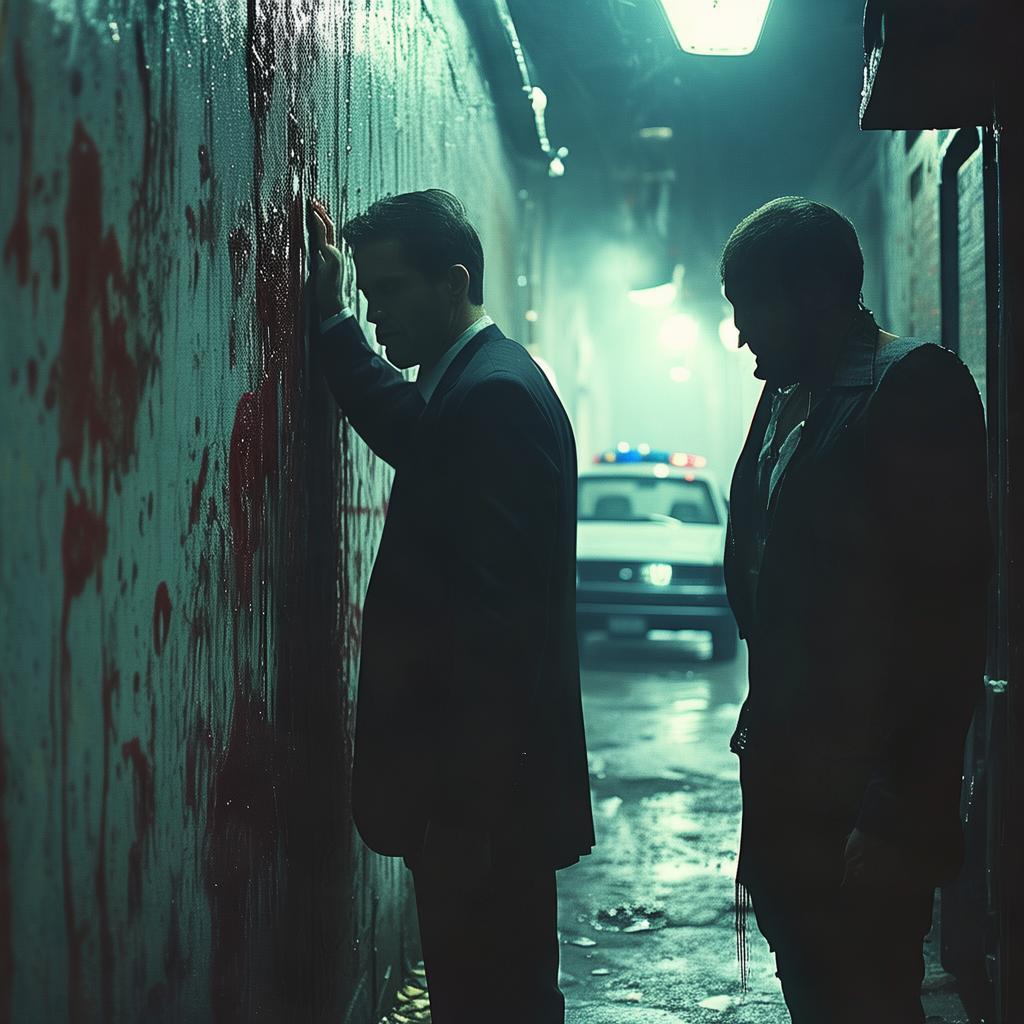The Symphony of Shadows: A Scholarly Slasher's Final Requiem
The grand hall of the university auditorium was a cavernous expanse of marble and wood, its walls adorned with portraits of scholars past. The air was thick with anticipation as the final notes of the symphony echoed through the room. The audience, a mix of students, faculty, and townsfolk, had gathered to witness the culmination of a year's worth of musical prowess. But tonight, the symphony was not just a showcase of talent; it was a prelude to something far more sinister.
Dr. Evelyn Harper, the university's esteemed music professor, stood at the podium, her eyes reflecting the intensity of the moment. She had spent months orchestrating this performance, her every note meticulously crafted to reflect the university's academic rigor and the community's spirit. Yet, as the first movement began, an undercurrent of unease rippled through the crowd.
The first act was a masterpiece, the strings weeping melodies of loss and triumph. But as the symphony progressed, the atmosphere grew increasingly tense. The second movement, a rhapsody of passion and conflict, seemed to mirror the university's own internal struggles. And then, just as the third movement began to build, the first death occurred.
A scream shattered the silence, and the audience gasped as a figure stumbled onto the stage, clutching a bleeding wound. The orchestra halted mid-performance, and Dr. Harper's face turned pale. The university president, Dr. Martinson, rushed to the stage, his expression one of horror and confusion.
The police arrived swiftly, their presence only adding to the chaos. The victim was a young music student, found slumped in the wings, his lifeless eyes staring into the void. The symphony was halted indefinitely, and the university was plunged into a state of shock and mourning.
As the investigation unfolded, more deaths followed, each one more grotesque than the last. The victims were found in various locations around the campus, each with a single, peculiar item left at the scene: a sheet of music, torn from the symphony's score. The police theorized that the killer was a deranged musician, driven by a desire to bring the symphony to an end.

The university was in an uproar. The symphony had been the centerpiece of the academic year, a celebration of the arts and the community's spirit. Now, it was a symbol of terror and despair. The media picked up on the story, turning it into a national sensation. The Scholarly Slasher became a household name, a specter haunting the halls of the ivory tower.
As the investigation deepened, a pattern began to emerge. The victims were all students or faculty members who had been critical of the symphony or the university's administration. The music left at the scenes seemed to be a taunt, a challenge to the university to uncover the truth.
Evelyn Harper, who had been the symphony's driving force, became a prime suspect. Her obsession with the symphony was well-known, and her behavior had become increasingly erratic in recent months. But as the police delved deeper, they discovered that Harper had been acting as a decoy, leading them away from the real killer.
The real Scholarly Slasher was revealed to be Dr. Adrian Thorne, a professor of philosophy whose life had been consumed by the symphony. Thorne had been a critic of the university's direction, believing that it had strayed from its academic roots. His obsession with the symphony was a manifestation of his desire to restore the university to its former glory.
The climax of the story came during the final performance of the symphony, where Thorne revealed his plan to destroy the university's heart and soul. As the orchestra played the final movement, Thorne entered the hall, a gun in his hand. He moved through the crowd, shooting anyone who got in his way.
Evelyn Harper, who had been hiding in the wings, confronted Thorne. In a climactic struggle, she managed to disarm him and turn the gun on herself, sparing the lives of the audience. Thorne, seeing his plan unravel, fled the scene, but was quickly apprehended by the police.
The symphony was never completed, but the university survived. The Scholarly Slasher's Symphony became a cautionary tale, a reminder of the dark side of obsession and the fragility of the human spirit. Evelyn Harper's sacrifice was remembered, and the university began to rebuild, vowing to honor her memory and the spirit of the symphony.
The Symphony of Shadows: A Scholarly Slasher's Final Requiem is a chilling narrative of obsession, betrayal, and the relentless pursuit of truth. It is a story that will linger in the minds of readers, a haunting reminder of the dangers that lie within the pursuit of knowledge and the power of art.
✨ Original Statement ✨
All articles published on this website (including but not limited to text, images, videos, and other content) are original or authorized for reposting and are protected by relevant laws. Without the explicit written permission of this website, no individual or organization may copy, modify, repost, or use the content for commercial purposes.
If you need to quote or cooperate, please contact this site for authorization. We reserve the right to pursue legal responsibility for any unauthorized use.
Hereby declared.









